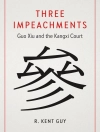One China, Many Taiwans shows how tourism performs and transforms territory. In 2008, as the People’s Republic of China pointed over a thousand missiles across the Taiwan Strait, it sent millions of tourists in the same direction with the encouragement of Taiwan’s politicians and businesspeople. Contrary to the PRC’s efforts to use tourism to incorporate Taiwan into an imaginary ‘One China, ‘ tourism aggravated tensions between the two polities, polarized Taiwanese society, and pushed Taiwanese popular sentiment farther toward support for national self-determination.
Consequently, Taiwan was performed as a part of China for Chinese group tourists versus experienced as a place of everyday life. Taiwan’s national identity grew increasingly plural, such that not just one or two, but many Taiwans coexisted, even as it faced an existential military threat. Ian Rowen’s treatment of tourism as a political technology provides a new theoretical lens for social scientists to examine the impacts of tourism in the region and worldwide.
Mục lục
Introduction
1. How Taiwan Became an Exceptional Territory
2. The Rise of Cross-Strait Travel and Tourism
3. Taiwan as Tourist Heterotopia
4. Circling Taiwan, Chinese Tour-Group Style
5. The Varieties of Independent Tourist Experience
6. Waves of Tourists, Waves of Protest, and the End of ‘One China’
Epilogue
Giới thiệu về tác giả
Ian Rowen is Associate Professor at National Taiwan Normal University. He is the editor of Transitions in Taiwan. Follow him on X @iirowen.












